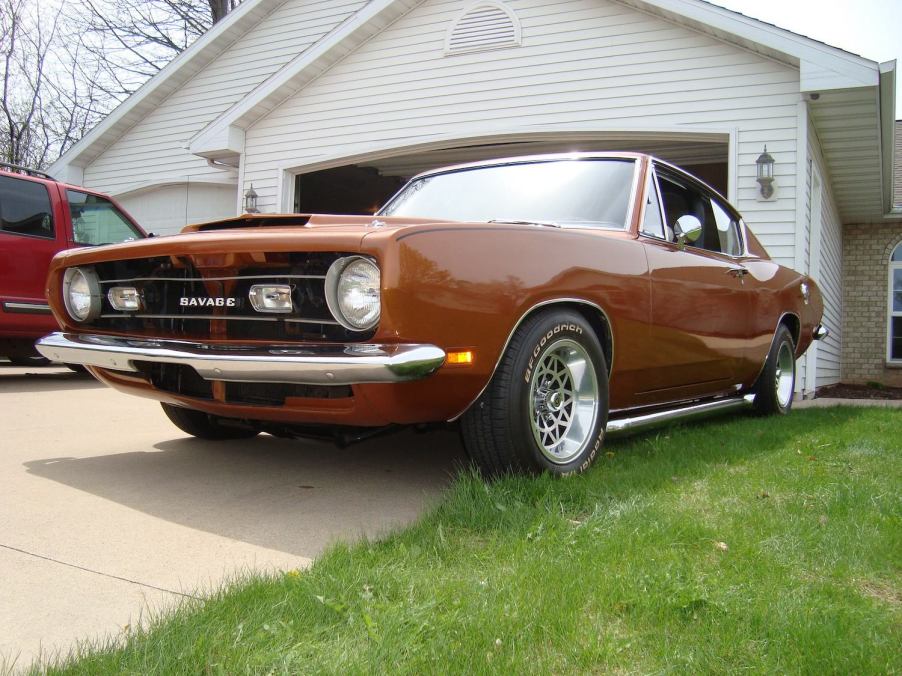
The Savage GT Was the Track-Ready Plymouth Barracuda America Deserved
The late 1960s were the golden age of track-prepped muscle cars. Ford fans with a little extra cash could splurge on a Shelby Mustang and Chevy enthusiasts could spring for the Yenko Camaro. By 1968, AutoCraft engineered a MOPAR version, a modified second-generation Plymouth Barracuda branded as the “Savage GT.” But Autocraft never built more than 12 before cutting the project: the Savage GT remains one of the greatest “what ifs?” in muscle car history.
The Savage GT’s Story

AutoCraft’s approach married brilliant engineering and brutal execution. The Savage GT was a fitting name for the result.
The Savage GT could corner as well as it could accelerate, a rarity in the muscle car era. It enjoyed the finest suspension and brake upgrades of its era, but at its heart was a tuned V8 rumbling through barely muffled “laker” pipes.
Back in 1969, Julian G. Schmidt reviewed the Savage GT for MotorTrend. In the MotorTrend review he didn’t mince words: “So, the Savage GT sits there growling and rocking back and forth like a Nordic fertility rite.” Schmidt continued with the metaphors:
“Its behavior doesn’t belie its name. Cranking up the engine is like zero hour for a squadron of Spads. When running, the din produces tactile vibrations that tell you without looking that not one of the engines available is stock.”
Julian G. Schmidt for MotorTrend
AutoCraft’s designers hacked off all the Barracuda’s original badging. But they didn’t stop there. They also cut open Plymouth’s split front fascia, leaving a grille-less snout, its only nod to aesthetics a horizontal strip of chrome and “SAVAGE” emblem.
AutoCraft gave the tailgate lid a similar treatment. The Savage GT rides on Mag rims reminiscent of the Aston Martin V8.
The car’s interior offered fine materials but was still dominated by a full roll cage, racing harnesses, and a huge aftermarket tachometer attached to the steering wheel column. The Savage was a truly American GT car.
AutoCraft’s built Plymouth Barracuda

Reviewer Julian Schmidt compared the Savage GT to the latest Mustang by Shelby and the Z-28 Camaro. He concluded that it was the Savage GT that had the winning recipe:
“Auto-Craft began with the right ingredients—aesthetic minds, marketing minds, mechanical minds, the best-looking of sporty cars, the candor to announce they intend to meet Shelby head-on, and a student designer who had the guts and good taste to reject several side scoop attempts when it became apparent that the Barracuda’s original uncluttered design was best.”
Julian G. Schmidt for MotorTrend
Here are all AutoCraft’s “Savage” modifications to the 1968-69 Plymouth Barracuda Formula S:
- Tuned 340, 383 or 440 Magnum V8 engine
- Aluminum high-rise manifold
- Aftermarket 4-barrel carburetor
- AutoCraft hood with functional scoop
- AutoCraft spoiler
- “Laker” style side-exit exhaust pipes
- Adjustable shock absorbers
- Front stabilizer bar
- Anti-windup dampers
- Adjustable traction bars
- Four disc brakes
- Mag rims
- 205 mm wide tires
- Padded roll cage
- Racing harnesses
The surviving Savages

AutoCraft’s Savage GT had an Achilles heel: the 1969 Plymouth Barracuda was especially nimble because it was based on the light A-Body chassis. But a big-block (383 or 440 V8) engine left it nose-heavy and cumbersome. It’s no surprise that most Savage GT customers opted for the 340 to save 200 pounds.
By 1970, Plymouth solved this problem by moving its Barracuda to the all-new E-Body platform (shared with the Dodge Challenger). Many consider this third-generation Barracuda the finest example of a Detroit “Pony Car.” But AutoCraft decided not to engineer an all-new Savage GT for the all-new Barracuda.
Sources disagree on how many Savage GTs AutoCraft built, but everyone agrees it was no more than 12. These ultra-rare muscle cars still crop up from time to time. Savage GT owner and enthusiast Brad Barrie maintains a Facebook Group to track them and knows of three. You can see a Savage GT barn find in the video below:



